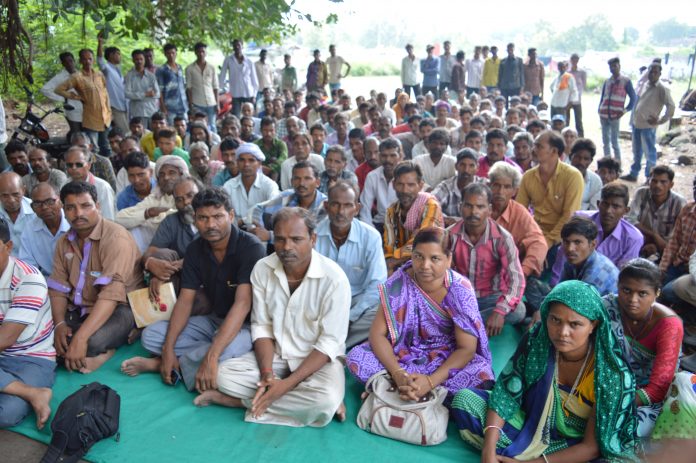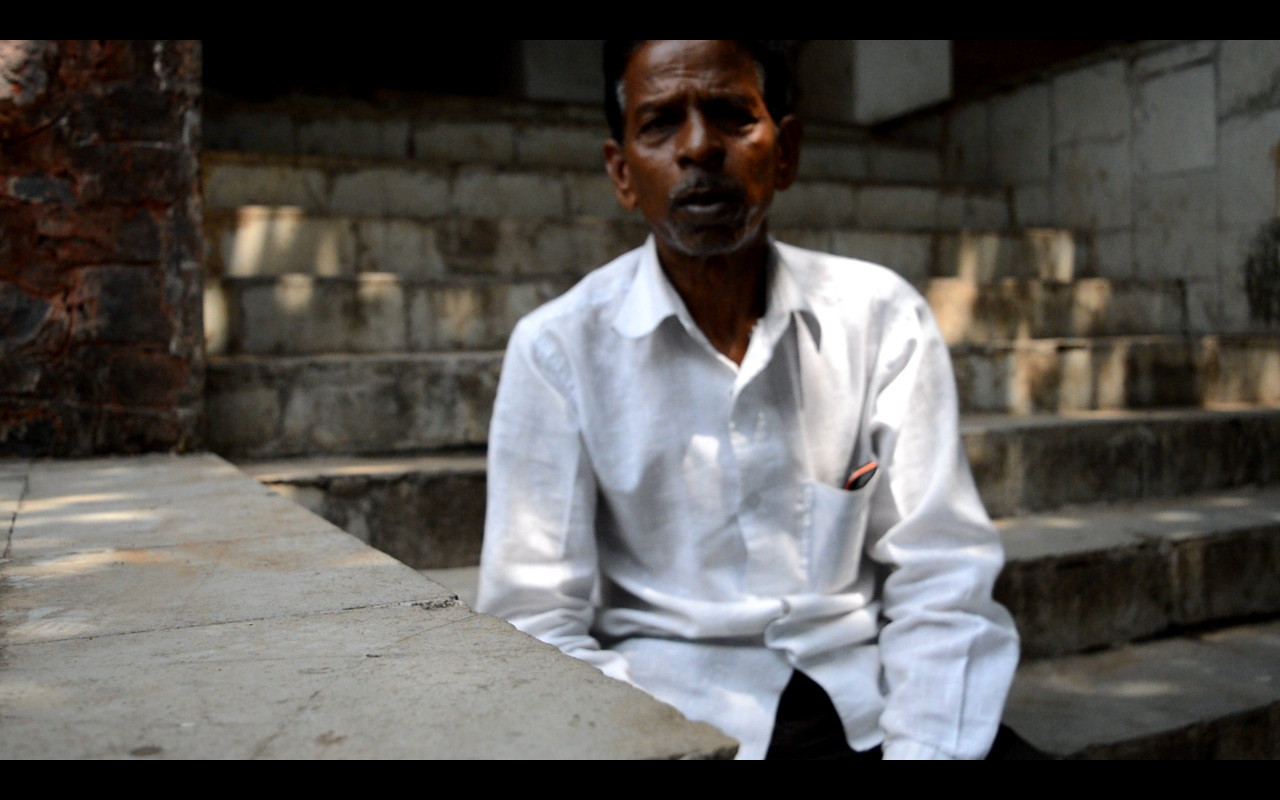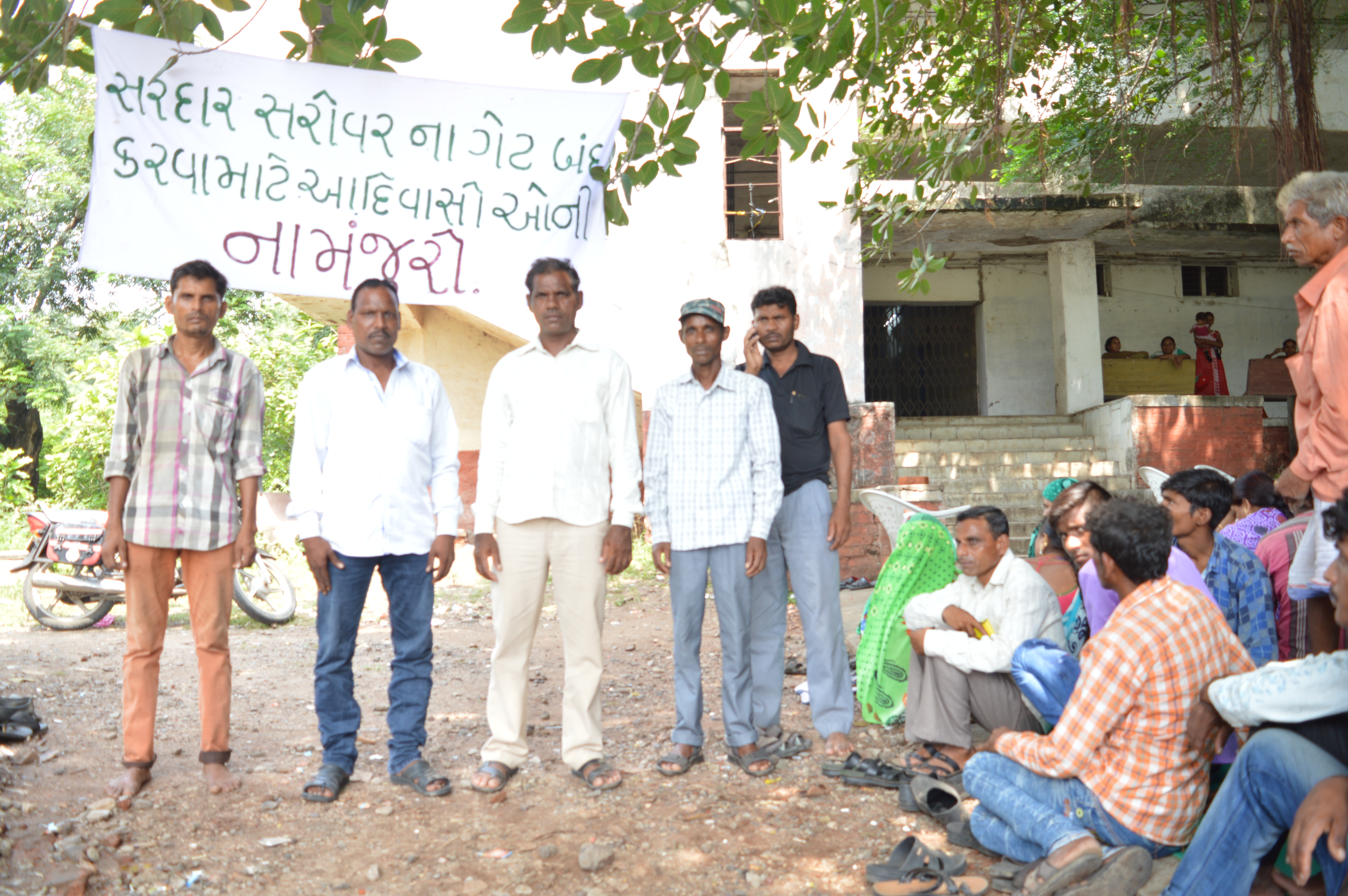
By Amit Kumar, TwoCircles.net
Over the past few years, the Indian state has faced increasing resistance from Adivasis across the nation over land acquisition and rehabilitation programmes. Even the most cursory look at the conditions of Adivasis across the nation lays bare the claims of the government that the Adivasis have been adequately compensated for their losses. This three-part series looks at how tribal regions; lives and homes in Gujarat have been left in disarray in the name of ‘development’, both new and old. The second part looks at how Sardar Sarovar Dam has ruined the lives of thousands of Adivasis living in the region of Narmada river, and how their repeated pleas to the government have been ignored by the central and state government.
Kevadia: Jikubhai Tadvi is a man in his 60s. For some, life after 60 is about relaxing, taking rest and even better, spending time doing what they have always wanted to do. Jikubhai, however, has other plans, and not out of choice. It would not be wrong to say that his entire life can be summed up in just one word: displaced. A life spent looking for answers, yet a life that is not even close to giving up. “All my life, I have believed that we will get justice, even though it gets hopeless at times. Like now,” he told TwoCircles.net when we visited Kevadia colony, a picturesque town about 30 km from Rajpipla town, the headquarters of Narmada district.

The Narmada river is a lifeline for millions in Madhya Pradesh, Gujarat and Maharashtra. Yet, no river has caused so much destruction to its inhabitants like the Narmada. There are rivers like the Kosi in Bihar and Brahmaputra in Assam, both known to cause havoc during monsoons. But in the case of Narmada, it is not the floods. Well, at least not the one caused by natural reasons. The destruction is the result of a government hell-bent on punishing the Adivasi community for their protests against seeing their villages submerge forever, their forests lost forever and worse, asking for compensation. The fight is not now, after all. Ratilalbhai Tadvi, a man in his 40s, says his father told him that they lost their farm when a helipad had to be built for India’s first Prime Minister Jawaharlal Nehru, who inaugurated the project back in 1961. “Helipad, offices, administrative buildings, even parking spaces. Each and every government building you see here (in Kevadiya) was built on Adivasi land. For more than fifty years, we have been asking for due compensation: land for land, government jobs and water for irrigation. And nothing has happened. Why would we protest if we got what was promised to us?”
When TwoCircles.net visited Kevadiya, the entire township was full of police: Prime Minister Narendra Modi was supposed to visit the town two days later to “inaugurate” the Sardar Sarovar Dam and dedicate it to the entire nation. Reports of his speech can be read elsewhere on the Internet. But just six kilometres from the place PM Modi would visit, a group of over 300 people, from families of all those who had been displaced, had been sitting on a protest that has now clocked over 14 months. As the locals inform us, this is not the first protest; this won’t be last. Started last year in July, the protest seemed to have achieved their aim when in July this year, a delegation met the Gujarat CM who assured that all their demands were valid and asked for two months to work on them. Two months later, nothing. So the locals went back to protest.
Satyagraha, as they term it, has become a part and parcel of their life. Sitting in the grounds of a government building, the locals, all Adivasis, hail from Madhya Pradesh, Gujarat and Maharashtra. While the protests in Madhya Pradesh under the aegis of Medha Patkar and Narmada Bachao Andolan have got much more coverage, the protests in Gujarat have largely escaped media attention. Jikubhai says that it would be unfair the two protests since they are part of the same resistance but says that he has been left slightly disappointed by the attitude of the media to their plight. “Our demands are the same, yet it seems that the magic of our PM is so strong that people are not even ready to acknowledge our demands,” he says with a dismissive smile.
What are the demands of the Adivasis
As per the official records, Jikubhai says, 11,000 people were displaced by the Sardar Sarovar Dam in the Narmada district. “I am not arguing against the number because we all know the truth that it is much higher than that,” he says. “We are just saying this: acknowledge, and account for, these numbers. All these people lost a lot so that we could develop a dam. Can our efforts be recognised? Time and again, we have been promised 5-acre land to each of the families of these 11,000 people. The reality? Go ask around,” he says. “We have been protesting since July last year. Why?” he asks.

It is important for a small history lesson here. In the early 80s, around 4,000 families were given about 5-acre land on an average as compensation, stretching all over from Narmada district to Surat district and even near Ahmedabad, says Jikubhai. However, no one got the amount of land that was promised to them. In the 90s, again, some people were allocated land, but that number pales in comparison to the number of people displaced during the late 80s and 90s. Bhagbhanbhai Tadvi, who turned 44 this year, says, “Even if we assume that the Gujarat government honours its promise of offering 5 acres land to each displaced family, their cut-off date for the same is that people who attained 18 years of age by January 1, 1987, would be eligible. Now tell me, this effectively will apply to people who are now at least 48 years old.” He says that the cut-off makes no sense on multiple fronts. “One, this does not even acknowledge the people who lost land in the late 80s and 90s. Two, people who are more than 48 years old will have at least one generation of sons and daughters, and grandchildren, to take care of. How can we all manage with 5 acres?” he asks.
Then, there is the question of government jobs. Kevadia has the look and feel of a typical government town: quarters based on rankings, neatly laid-out offices, a CISF station, etc. However, what the orderly and rather clean city hides, according to locals, is that there are few Adivasis who are lucky to have these benefits. Ratilalbhai, who lives on the “village” side of Kevadia, says, “Look, we have no issues with people coming here and working. No one holds any grudge or ill-feeling against them. But over 95% of government employees are non-Adivasis. What does this show? Our youths get no jobs here. A few years ago, about 400 youths got a job but on short-term contract basis. If the dam has taken away all that we knew, give us jobs at least? Our youths have been reduced to working as daily wage labourers across Gujarat. A dam so big that PM Modi wants to dedicate it to the entire nation, but will he come and listen to us? No chance. What will he say? He was our CM for 15 years and this is where we are…now he is too big for us,” he says.
Irrigation in 15 districts? How come we get nothing, ask locals.

The most important, and by far the biggest “advantage” of the Sardar Sarovar Dam, has been the irrigation water it will bring: the official site lists it at over 18 lakh hectares for over 15 districts of Gujarat. The main Narmada canal, in fact, flows at just over 3 km from the site of the protest. In terms of engineering and what it seeks to achieve, it is a remarkable feat. Over 500 km long, the canal brings water to areas that could have never had the water of Narmada. Yet, less than 1 km from the canal, the farms tell a different story. Ravibhai Tadvi, a local farmer, shows us the “canals” next to his farm which was supposed to get water from the canal. It is a good thing that he pointed the exact spot where they are. Camouflaged by overgrown weeds, creepers and shrubs, the canals bear a forgotten look, and for good reason. “These were made in the 90s, and until today, we are yet to see any water in them. A canal flows right below our nose, but we do not get a drop of it. This year, the rainfall has been decent, so we have been able to sow cotton, maize and other plants. But we still depend on rainwater when a canal the size of a river flows so close.” When asked why this happened, his answer was blunt. “How would I know? All I can say that these canals made some contractor a lot of money, but they mean nothing to us. They are so full of weed that even rainwater doesn’t flow through it,” he says.
Back at the protest site, locals are trying to strategize how to meet PM Modi when he visits the dam on September 17. Ideas range from stopping him, to submitting an application to him, to even bringing him to the local protest site so that he can see the condition of the locals. One such person, Ilabhai Dulji, is slightly exasperated when he says, “Arey vo (police) hum logon ko Kevadia se bahar bhi nahi jaane denge, aur tum Modi se milne jaoge? (The police won’t even let us step out of Kevadia and you want to go meet Modi?”.
Ilabhai’s loss is the same as everyone else, and also on a personal front. Last year, during the fifth month of protest, he lost his father who had been protesting along with thousands of others. “He was 85, and he spent almost 40 years of his life protesting. He collapsed while protesting and died in Vadodara…I believe it is my responsibility to continue his work. When the PM did not bother at the death of an elderly person, what makes people think he will bother now?” he says. And he was partially right. The police presence in the city was as much to contain the protests as it was to act as a security buffer for PM’s visit. In fact, Jikubhai and a few other protesters said they were sure their phones would be confiscated on September 16 and worse, they might even be detained till PM left the town.
The Sardar Sarovar Dam and the havoc it caused in Gujarat is difficult to quantify in numbers. What is sure is that once again, the Adivasi population of this country has paid a heavy and destructive price for the “development” of the nation. “This canal sometimes makes me so angry,” says Shankarbhai, another local who is at the protest site and accompanies us to the canal. “Look at it! So much water…and yet we lost so much and gained nothing. We were not supposed to be poor…we have been pushed towards poverty. Our condition is the worst in the country,” he says, chucking his Bidi in the canal. “No,” says Jigneshbhai, another local. “Go to Jharkhand. You will see what damage mining does,” he adds. In 2011, Jigneshbhai had toured Jharkhand and Odisha as part of an Adivasi contingent. “At least we get clean air and are not covered in dust,” he says.
“Agree,” says Shankarbhai. The canal continues to flow. “We should be thankful, then,” says Shankarbhai. “Badi meherbaani, Modi ji!! (We are grateful, Modi ji!).

